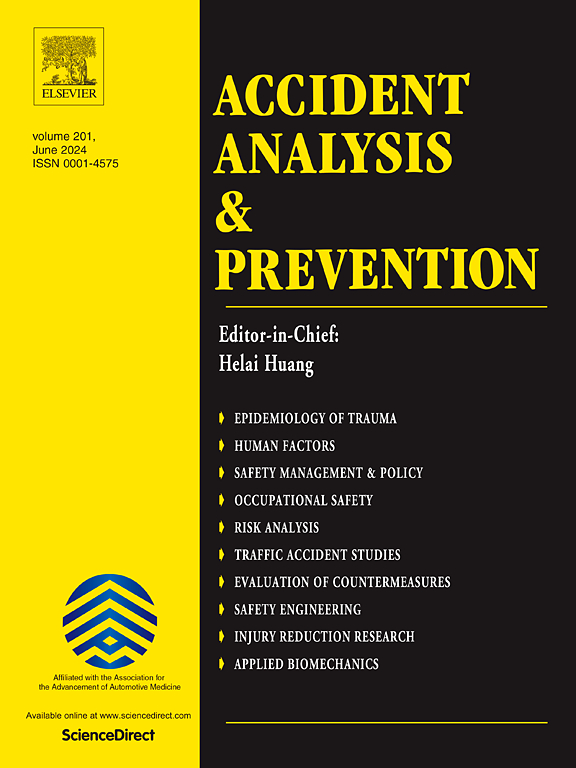Innovative prediction and causal analysis of accident vehicle towing probability using advanced gradient boosting techniques on extensive road traffic scene data
IF 5.7
1区 工程技术
Q1 ERGONOMICS
引用次数: 0
Abstract
Accurate prediction and causal analysis of road crashes are crucial for improving road safety. One critical indicator of road crash severity is whether the involved vehicles require towing. Despite its importance, limited research has utilized this factor for predicting vehicle towing probability and analyzing its causal factors. This study addresses this gap by predicting the probability of vehicle towing in road crashes based on road scene features and identifying key causal factors. Utilizing the Transportation Injury Mapping System (TIMS) dataset from California, USA, encompassing 12 years, 14 relevant features, and over 2 million road crash records, research team developed a prediction model using advanced gradient boosting techniques. Our model outperforms Random Forest, GBDT, and XGBoost in predictive accuracy. Employing the Shapley Additive Explanation (SHAP) method, researchers elucidate seven key factors influencing towing necessity. These findings introduce a novel predictive approach and offer valuable insights for road crash risk assessment and road safety planning.
利用先进的梯度增强技术对大量道路交通场景数据进行事故车辆拖拽概率的创新预测与原因分析。
道路交通事故的准确预测和原因分析对提高道路安全至关重要。道路交通事故严重程度的一个关键指标是相关车辆是否需要拖拽。尽管它很重要,但利用该因子预测车辆拖拽概率和分析其原因的研究还很有限。本研究通过基于道路场景特征预测道路碰撞中车辆牵引的概率并识别关键原因来解决这一差距。利用来自美国加利福尼亚州的交通伤害地图系统(TIMS)数据集,包括12年,14个相关特征和超过200万的道路碰撞记录,研究小组利用先进的梯度增强技术开发了一个预测模型。我们的模型在预测精度上优于随机森林、GBDT和XGBoost。采用Shapley加性解释(SHAP)方法,阐明了影响拖曳必要性的七个关键因素。这些发现提出了一种新的预测方法,并为道路碰撞风险评估和道路安全规划提供了有价值的见解。
本文章由计算机程序翻译,如有差异,请以英文原文为准。
求助全文
约1分钟内获得全文
求助全文
来源期刊

Accident; analysis and prevention
Multiple-
CiteScore
11.90
自引率
16.90%
发文量
264
审稿时长
48 days
期刊介绍:
Accident Analysis & Prevention provides wide coverage of the general areas relating to accidental injury and damage, including the pre-injury and immediate post-injury phases. Published papers deal with medical, legal, economic, educational, behavioral, theoretical or empirical aspects of transportation accidents, as well as with accidents at other sites. Selected topics within the scope of the Journal may include: studies of human, environmental and vehicular factors influencing the occurrence, type and severity of accidents and injury; the design, implementation and evaluation of countermeasures; biomechanics of impact and human tolerance limits to injury; modelling and statistical analysis of accident data; policy, planning and decision-making in safety.
 求助内容:
求助内容: 应助结果提醒方式:
应助结果提醒方式:


